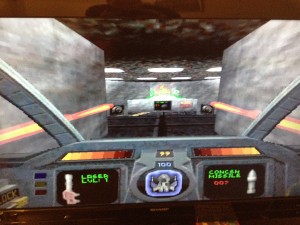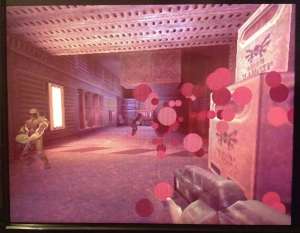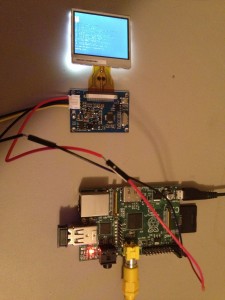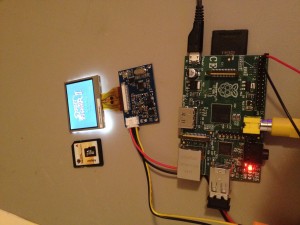Today I present a tutorial on compiling Descent for your Raspberry Pi running Raspbian. At the end of this tutorial you should have binaries ready to go and and a playable version of the game Descent. If you don’t want to wait for the compile, I have the binaries ready for you. Just skip to the end.
- Install the required dependancies
- sudo apt-get install libsdl1.2debian libsdl-mixer1.2 libsdl-mixer1.2-dev libsdl-image1.2 libsdl-image1.2-dev libsdl-ttf2.0-0 libsdl-ttf2.0-dev libsdl-net1.2 libsdl-net1.2-dev gcc-4.7 scons libphysfs-dev
- cd ~/
- mkdir descent
- cd descent
- Download the needed source code:
- Download the needed patches:
- Unzip the source files and the patches:
- tar xvfz d2x-rebirth_v0.57.3-src.tar.gz
- tar xvfz d1x-rebirth_v0.57.3-src.tar.gz
- gunzip d1x-rebirth-rpi.diff.gz
- gunzip d2x-rebirth-rpi.diff.gz
- You now have to patch the source code with the diff files.
- cd into the source code directories.
- Descent 1
- cd ~/descent/d1x-rebirth_v0.57.3-src/
- patch -p1 < ../d1x-rebirth-rpi.diff
- Descent 2
- cd ~/descent/d2x-rebirth_v0.57.3-src/
- patch -p1 < ../d2x-rebirth-rpi.diff
- Descent 1
- cd into the source code directories.
- We are now ready to compile!
- On the command line enter these two commands:
- export CC=gcc-4.7
- export CXX=g++-4.7
- Descent 1
- cd ~/descent/d1x-rebirth_v0.57.3-src/
- scons raspberrypi=1
- Wait around 30 – 40 minutes.
- If there are no errors you should now have a d1x-rebirth executable file in your directory!
- Descent 2
- cd ~/descent/d2x-rebirth_v0.57.3-src/
- scons raspberrypi=1
- Wait around 30 – 40 minutes.
- If there are no errors you should now have a d2x-rebirth executable file in your directory!
- You now need the data files that holds the actual game levels, sounds, artwork, etc. These are in .hog, .pig, and .ham (descent 2 only) files. You can get the game content from dxx-rebirth, the creators of this port. They also have links to the shareware files:
- Unzip those files by running unzip filename
- copy descent.hog and descent.pig to ~/descent/d1x-rebirth_v0.57.3-src/
- copy D2DEMO.HAM, D2DEMO.HOG and D2DEMO.PIG to ~/descent/d2x-rebirth_v0.57.3-src/
- You are now ready to play!
- Descent 1
- cd ~/descent/d1x-rebirth_v0.57.3-src/
- ./d1x-rebirth -hogdir . (yes, thats a period at the end that must be there)
- Descent 2
- cd ~/descent/d2x-rebirth_v0.57.3-src/
- ./d2x-rebirth -hogdir .
- Descent 1
- ENJOY!!
I realize these are a lot of instructions, but I wanted to make them as verbose as possible.
Below are the precompiled binaries with shareware data files already copied over.
Descent 1 Binaries | Descent 2 Binaries
Please let me know if any of this doesn’t work for you. I wrote down every single step I did when I compiled it, but I’m afraid I may have missed something. Let me know and I’ll correct it!
-Shea




